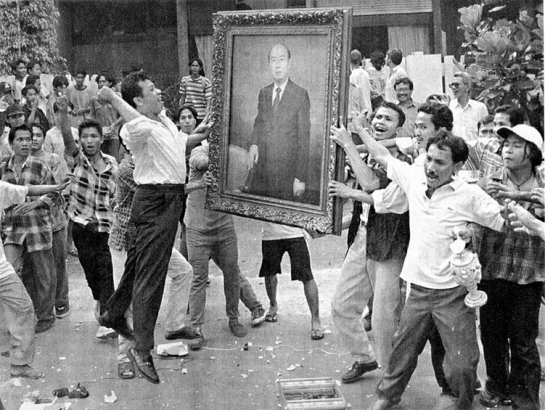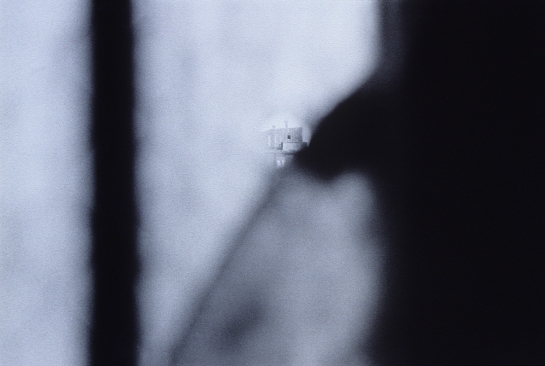“The Ethnic Chinese Millionaire”
Exhibition opening on Saturday, September 8th at 7 pm
Opening times: Friday, Saturday, and Sunday 4–7 pm
Artist’s talk with Myriam Naumann on Saturday, September 29th at 7 pm.


Adhesive letters on wall, each text block 250 x 250 cm.

In conversation with the research associate Myriam Naumann of Humboldt University, Berlin. September 29, 2018.

In conversation with the research associate Myriam Naumann of Humboldt University, Berlin. September 29, 2018.
Myriam Naumann: In the exhibition “The Ethnic Chinese Millionaire” at the Berlin gallery Manière Noire, the method of turning text into space described above undergoes a variation; the result is a (complex) connection between literature (A Lesser Day) and art (the three works of the exhibition). How would you characterize the relationship between your book and the exhibition?
Andrea Scrima: The exhibition consists of an image printed on an invitation card; a large-scale text installation on two walls; and opposite these, on a shelf mounted to the wall, a small sculptural object. Although I’ve exhibited many such text works in the past, now, after I’ve published a book, the relationship to text suddenly takes on a new, perhaps even problematic dimension, because the passage I’ve used comes directly out of A Lesser Day. And so it’s no longer about formal questions alone; there’s a reciprocal inquiry between art and literature going on here. Is this nothing more than two vastly enlarged pages of an open book? An image is described: a photograph cut out of the newspaper in which a raging crowd is in the act of plundering a millionaire’s home. In the foreground, an oil painting is held aloft by several people: it’s the portrait of the millionaire. The photo was taken in the 1990s, when ethnic Chinese businessmen living in Indonesia were thought to have caused the economic crisis of the time and suddenly found themselves in danger. The narrator describes the photograph in painstaking detail; she literally reconstructs the photograph in words. What is the mental image that results from this description, and what relationship does it bear to the original photograph? It’s about the description of an image of an image here: a text about the printed photograph of a portrait painted on canvas of a man who has fled for his life only moments before—an oil painting that was destroyed seconds after the picture was taken. The media-reflexive aspects of this relationship are very interesting to me.
The written conversation is now published at 3 Quarks Daily; the German version can be read at Jitter: Magazin für Kunst und visuelle Kultur.

Prepared Object. Oil paint of half an apple. Shelf ca. 15 x 15 cm.


Adhesive letters on wall, each text block 250 x 250 cm.

Detail, installation
WALL TEXT:
And another photograph: a group of men divided in two, figures frozen in a multitude of poses and expressions. Mouths half open in mid-jeer, mid-shout, jaws hanging loose or thrust forwards, teeth exposed behind taut lips, eyes rigid with fury, darting in apprehension. And a multitude of arms, bare or in sleeves pushed up to the elbows, gesticulating, grappling, converging toward the center of the picture, arms reaching into the camera frame, cropped on the left and right, holding an object aloft at the center of the photograph: an imposing gilt frame containing the painted portrait of an ethnic Chinese millionaire. His expression is attentive and dignified, his eyes, having gazed into the eyes of the portrait’s painter, are gazing into the camera; behind him, in the distance, is his Indonesian home. A window front in a brick façade, drapes pulled partially open, revealing an interior in the midst of being torn apart; muddy shoes and bare feet tracking in the dirt and envy over expensive carpets and parquet floors, furniture being flung outside where lush trees and carefully trimmed shrubs frame the plundering mob. And the painted man, equal in size to the figures in the photograph and just as real, or rather just as flat on the printed page, wearing a dark suit and tie and posing beside an ornate chair, held aloft by six arms and a man with a balled fist, caught in mid-jump, mid-strike, and the painted man suspended, curiously unperturbed, his reserved gaze a magnet, a reservoir of calm in the eye of a storm.
And in the foreground, a man in a baseball cap and a flannel shirt about to hurl a porcelain vase to the ground, where cords from electrical appliances smashed beyond recognition are snaking along the littered patio. An object is lying beside him, an overturned typewriter perhaps, its uncertain contours vanishing into the dots of the offset screen. In the background, several men are looking away from the camera, toward the door of the house, where the marauders are hauling out their booty; one man is smiling broadly into the camera, and another is casting an anxious glance over his shoulder. And the portrait, centered in the photograph, hovering before the camera’s lens a moment before its annihilation, appearing as though it were imbedded securely in the pandemonium, strangely immutable and still, the portrait’s subject impervious to the impending danger, inaccessible in his painted universe and safe. And a man standing behind it, concealed by the large frame and visible only from the waist down, his feet in rubber thongs, black pants cut off below the knee, two legs jutting out from underneath the canvas, like an extension of the millionaire’s body, one moment of concurrence between the raging mob and its effigy, the millionaire having apparently fled just in the nick of time.
From A Lesser Day, Spuyten Duyvil, second edition 2018
At the back of the gallery, in its separee, Manière Noire also presented a selection of photographs from an earlier text/photo installation titled Through the Bullethole.
More images from this installation can be found here.

Photograph from the series Through the Bullethole

In the separee at the back of the gallery: A selection of photographs from the earlier project Through the Bullethole.
